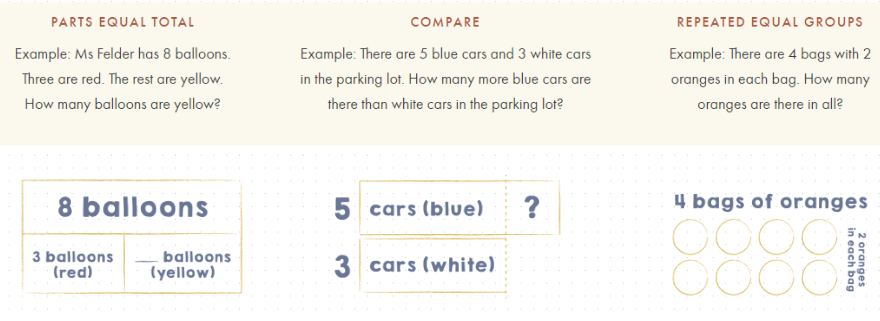A Reading Comprehension Tool to Solve Math Word Problems
September 6, 2023
You survived the wait while we’ve been building up to the unveiling of Structures of Equality (SoE). In my last blog, you got a sneak peek. Today, you get the full introduction.
A Quick Recap
I created Structures of Equality when I became frustrated with common word problem solving approaches. There are a few, common, traditional approaches to solving math word problems, each with their own advantages and disadvantages.
One of the most effective strategies I used in the classroom was bar models. But even they have limitations. It’s possible a student can create a bar model and not fully grasp the context of a story problem. I knew the missing piece was a reading comprehension tool that would address this issue.
The Creation of Structures of Equality (SoE)
In addition to bar models, another approach with many merits is Cognitively Guided Instruction (CGI). The barrier for me was there are so many problem types, I sometimes found it confusing to pick a model.
So I took the best of both, along with a few other elements, and created Structures of Equality. I don’t often call things groundbreaking, but I truly think they are.

So…what are the structures and what makes them so special?
Structures of Equality (SoE) are graphic organizers that help students map out a math story. The 3 different SoEs are:
- Parts Equal Total
- Compare
- Repeated Equal Groups
A SoE is made of three crucial elements. They MUST:
- Contain values (numbers)
- Have labels (units of measure, the things you are counting…)
- Represent equality
When a student includes all three, it indicates comprehension.
These are the only models you need to diagram any problem type in the elementary Common Core standards.

Can my students do these independently?
Yes! After explicit instruction and consistent use, students will internalize the structures. They will have a reading comprehension tool to confidently work through any word problem.
If they cannot decode, you will still need to provide support and read the problem to them.
How do I get started?
You’ll want to approach teaching the structures systematically. Initially, your students will need support to feel comfortable. Over time, instead of frustration, they will be excited to solve problems that previously challenged them.
Over the next few weeks, we’ll dive deep into each of the structures, additional examples, and how to teach them to your students.
Don’t want to wait? Join my email list below. You’ll get access to resources before they hit my website and learn about professional development opportunities.
Conclusion
By combining bar models and Cognitively Guided Instruction (CGI), I’ve cooked up something truly revolutionary. With these graphic organizers – Parts Equal Total, Compare, and Repeated Equal Groups – your students will have the tools and confidence to work their way through any word problem.
Leave a Reply Cancel reply
Brand & Web Design by Parson Lane | Copywriting by Stacy Eleczko
SUBSCRIBE